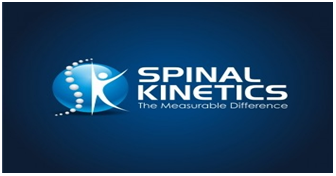Can Ovarian Auto Transplantation Become a Reasonable Alternative to Treat Symptomatic Menopause?
BM Petrikovsky*
Professor and former Chair of Obstetrics & Gynecology, Nassau University Medical Center, USA
Submission: August 14, 2019; Published: November 08, 2019
*Corresponding author: BM Petrikovsky, Professor and former Chair of Obstetrics & Gynecology, Nassau University Medical Center, USA
How to cite this article: BM Petrikovsky*. Can Ovarian Auto Transplantation Become a Reasonable Alternative to Treat Symptomatic Menopause?. Glob J Reprod Med. 2019; 7(2):555708. DOI: 10.190880/GJORM.2019.07.555708.
Keywords: Auto transplantation; Symptomatic menopause; Pharmaceutical industry; Ovarian function; Endometrial sampling; Cryoprotectant agents; Estrogens; HR therapy; Turner syndrome; Orthotopic transplantation
Introduction
Collaborative group on Hormonal Factors in Breast Cancer recently published their meta- analysis study linking hormonal replacement (HR) to breast cancer [1]. These authors concluded that HR users are at greater risk of invasive breast cancer compared to non-HR users. Risks are greater for current users, but some degree of risk persisted for more than a decade after HR use ceased. Breast cancer risks did not differ whether estrogens were administered orally or transdermally [1]. There appeared to be little risk from topical vaginal preparations [1]. The collaborative study included 143887 postmenopausal women on HR therapy (study group) and 424972 without HR therapy (controls). The study reported an increase breast cancer incidence by about one in every 50 users of estrogen plus daily progestogen; one in every 70 users of estrogen plus intermittent progestogen and one in every 200 users of estrogen only preparations.
The Women’s Health Initiative (WHI) randomized clinical trials in 2002, also suggested that HR is associated with an increased risk of breast and endometrial cancer [1,2] The risks and benefits of HR appeared to be dose dependent.3 The pharmaceutical industry attempted to partially resolve this issue by individualization of HR therapy based on the patients’ needs. Three factors affect the risk benefits ratio of HR: the age at initiation, the dose of hormone, and the route of administration.3 Estrogen deficiency in menopause on the other hand may result in significant bone loss, vaginal and bladder atrophy, among other negative symptoms [3-5]. The risk of life-threatening side effects of HR therapy prompted the investigations to search for alternatives to the traditional approach. Two major developments are currently under investigation; ovarian tissue conservation and auto transplantation and activation of dormant follicles [6-10].
Material and Methods
In 2000; we created a first ever ovarian tissue bank for auto transplantation. The research protocol was as follows [11].
Step 1
After obtaining approval from the Institutional Review Board patients age 40 and under; were included in this study. Normal ovarian function in these cases was established prior to ovarian tissue harvesting using hormonal assay; pelvic ultra-sonography and endometrial sampling if indicated.
Step 2
Ovarian cortical tissue retrieved with the patients consent during indicated obstetrical or gynecological procedures was frozen for long term storage. The technique we used was slow freezing; described later and with modifications by Rival Leonel et al.12 We used programmable freezers to achieve controlled freezing rates. The addition of cryoprotectant agents (CPA) to the cryopreservation medium helped to prevent ice crystal formations. CPAs protect the cells against injuries caused by both ice crystals and hypertonicity during cryopreservation [12]. In our slow freezing protocols for ovarian tissue; a combination of one permeating agent and one non permeating agent were used. CPA concentrations was 1.5 m for the permeating agent (DMSO) and 0.1 m for the nonpermeating agent (sucrose).
Comment
It appears that HR therapy is here to stay in spite of the possible significant side effects; which include invasive breast and endometrial malignancies [1-4]. Recent KRONOS KEEPS study [13] addressed the benefits and risks of menopausal hormone treatments including the effect of HR therapy during menopause on major aspects of women life and well-being. They reported less depression and anxiety in women of the HR treatment group. Wrinkling is another consequence of aging related to menopause and possibly to estrogen deprivation [14]. Estrogens influence skin appearance through collagen production and hydration. In retrospective trails; long term HR users were shown to have more elastic skin and less severe wrinkling than women who never used estrogens [15,16]. In addition to efficacy of the lower doses of HR used in KEEPS reducing hot flashes and improve sleep; it helped to improve the bone density of trabecular and cortical bone; compared with the placebo group [17]. These results are consistent with the WHI; which showed that HR therapy protects against femoral neck fracture [18].
Symptomatic menopause requires treatment; the mainstay of which remains HR despite the serious side effects. Many women today; however; are looking for alternatives to avoid these risks. Ovarian auto transplantation may become one of these alternatives. The history of cryopreservation and transplantation of ovarian tissue has to do with preserving fertility in women of reproductive age with cancer [19]. Ovarian tissue cryopreservation and transplantation has also been proposed to patients with premature ovarian failure (Turner syndrome and galactosemia) or autoimmune diseases treated with chemotherapy. Ovarian tissue transplantation may be either orthotopic or heterotopic [20,21]. Orthotopic transplantation implies the grafting of cortical strips to their natural site (pelvic peritoneum or broad ligament). Heterotopic transplantation implies grafting the ovarian tissue outside the natural location. Different sites have been used including forearm; abdominal wall; sub peritoneal space and the chest wall. A Belgian group from Catholic University of Louvain was the first to achieve a live birth after transplantation of frozen ovarian tissue in 2004 [22]. In the 15-year period from 1997 to 2012; 582 patients had ovarian tissue preservation and by 2012; 11 patients had undergone transplantation [23]. Predicting the life span of grafts has been difficult. The reported period of ovarian function after reimplantation vary from one to 10 years [24-27].
Conclusion
Hormonal replacement therapy will never equate natural rhythmical releases of hormone. In our opinion harvesting; conservation; and reimplantation of young cortical ovarian tissue may benefit many well informed and motivated women with symptomatic menopause.27 The long-term outcome and the safety of this procedure will be the subject of future research.
References
- (2019) Collaborative Group on Hormonal Factors in Breast Cancer: Type and timing of menopausal hormone therapy and breast cancer risk. Lancet 10: 1016-1028.
- Hersh Al, Stefanick ML, Stafford RS (2044) National use of postmenopausal hormone therapy: Annual trends and response to recent evidence. JAMA 291(1): 47-53.
- Buist DS, Newton KM, Miglioretti DL, Beverly K, Connelly MT, et al. (2004) Hormone therapy prescribing patterns in the United States. Obstet Gynecol 104 (1): 1042-1050.
- Grodstien F, Clarkson TB, Manson JE (2003) Understanding the divergent data on postmenopausal hormone therapy. N Engl J Med 348(7): 645-650.
- Petrikovsky BM (2019) Individual approach to hormone replacement therapy- a computer assisted method of assignment of the minimal useful dose. Am J Biomed Sci Res (1): 26-28.
- Oktay K, Economos K, Kan M, Rucinski J, Veeck L, et al. (2001) Endocrine function and oocyte retrieval after autologous transplantation of ovarian cortical strips to the forearm. JAMA 286(12): 1490-1493.
- Petrikovsky BM, Zharov EV, Ansari A (2019) A novel treatment of symptomatic menopause by autologous ovarian transplantation. Am J Biom Science Res 6: 8-12.
- Anderson CY, Kristensen SG, Greve T, Schmidt KT (2012) Cryopreservation of ovarian tissue for fertility preservation in young female oncological patients. Future Oncol 8(5): 595-608.
- Li J, Kawamura K, Cheng Y, Liu S, Klein C, et al. (2011) Activation of dormant ovarian follicles to generate mature eggs. Proc Natl Acad Sci 107: 10280-10284.
- Kawamura K, Kawamura N, Hsueh AJW (2016) Activation of dormant follicles: a new treatment for premature ovarian failure? Curr Opin Obstet Gynecol 28(3): 217-222.
- Petrikovsky BM, Zharov EV, Cohen M (2019) Individualized hormone replacement therapy versus ovarian transplantation. W J Gynecol Womens health 1(5): 16-21.
- Rivas Leonel EC, Lucci CM, Amorim CA (2019) Cryopreservation of human ovarian tissue: A Review Transfus Med Hemother 46: 173-181.
- Miller VM, Naftolin F, Asthana S, Black DM, Brinton EA, et al. (2019) The Kronos early estrogen prevention study (KEEPS): what have we learned? Menopause 26(5): 1071-1083.
- Wolff EF, Narayan D, Taylor HS (2005) Long term effects of hormone therapy in skin rigidity and wrinkles. Fertil Steril 84: 285-288.
- Lemperle G, Holmes RE, Cohen SR, Lemperle SM (2001) A classification of facial wrinkles. Plast Reconstr Surg 108(6): 1735-1750.
- Wolff E, Pal L, Altun T, Madankumar R, Freeman R, et al. (2011) Skin wrinkles and rigidity in early postmenopausal women vary by race/ethnicity: baseline characteristics of the skin ancillary study of the KEEPS trial. Fertil Steril 95(2): 658-662.
- Farr JN, Khosla S, Miyabara Y, Miller VM, Kearns AE, et al. (2013) Effects of estrogen with micronized progesterone on cortical and trabecular bone mass and microstructure in recently postmenopausal women. J Clin Endocrinol Metab 98(2): E249-E257.
- Cauley JA, Robbins J, Chen Z, Cummings SR, Jackson RD, et al. (2003) Effects of estrogen plus progestin on risk of fracture and bone mineral density: The Women’s Health Initiative randomized trial. JAMA 290: 1729-1738.
- Amorim CA, Leonel ECR, Afifi Y, Coomarasamy A, Fishel S (2019) Cryostorage and retransplantation of ovarian tissue as an infertility treatment. Best Pract Res Clin Endocrinol Metab 33(1): 89-102.
- Jadoul P, Dolmans MM, Donnez J (2010) Fertility preservation in girls during childhood: Is it feasible, efficient and safe? And to whom should it be proposed? Hum Reprod Update 16: 617-630.
- (2008) The Practice Committee of the American Society for Reproductive Medicine. Ovarian tissue and oocyte cryopreservation. Fertil Steril 90: S241-S246.
- Donnez J, Dolmans MM, Demylle D (2004) Livebirth after orthotopic transplantation of cryopreserved ovarian tissue. Lancet 364: 1405-1010.
- Jadoul P, Guilmain A, Squifflet J (2017) Efficacy of ovarian tissue cryopreservation for fertility preservation: lessons learned from 545 cases. Hum Reprod 32: 1046-1054.
- Jensen AK, Kristensen SG, Macklon KT (2015) Outcomes of transplantations of cryopreserved ovarian tissue to 41 women in Denmark. Hum Reprod 30: 2838-2845.
- Petrikovsky BM (2016) Can menopausal symptoms be treated with ovarian auto transplantation? In Press
- Anderson CY, Kristensen SG (2015) Novel use of the ovarian follicular pool to postpone menopause and delay osteoporosis. Reprod Biomed 31: 128-131.
- Petrikovsky BM, Zharov EV, Cohen M (2019) Individualized hormone replacement therapy versus ovarian transplantation. Word J Gynecol Womens Health 12: 1-6.






























